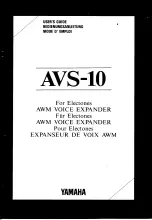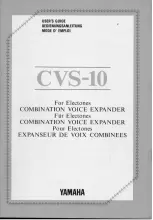
50
51
Consult the vehicle owner's handbook for location of anchorage fittings or anchorage points and the
possible use of spacers. Some vehicles may have an anchor fitting fitted by the vehicle manufacturer. If
anchorage points cannot be found refer to car manufacturer or local child restraint fitting station or traffic
authority for optimum position of anchorage point and the use of spacers.
IMPORTANT:
THE ATTACHMENT CLIP COVER MUST ALWAYS BE USED AS IT PREVENTS THE RISK OF INCORRECT
FITMENT OF THE ATTACHMENT CLIP TO THE ANCHOR FITTING. ALWAYS ENSURE THAT THE
ATTACHMENT CLIP IS CORRECTLY ENGAGED TO THE ANCHOR FITTING AND NOT HOOKED OR FITTED
TO ANY OTHER OBJECT BEFORE EACH USE OF THE RESTRAINT. THIS IS ESPECIALLY IMPORTANT IN
VEHICLES SUCH AS STATION WAGONS, VANS, HATCH BACKS OR VEHICLES WITHOUT A FIXED PARCEL
SHELF, SINCE THE ANCHOR POINT IS USUALLY NOT VISIBLE.
IMPORTANT INSTALLATION NOTE:
In some vehicles the anchor fitting in the rear vertical panel can only be installed in one way. Please refer
to vehicle owner's handbook or a child restraint fitting station for correct method.
Extension Strap distance to be measured.
Length 300mm (Use Babylove part K304 or equivalent)
Length 600mm (Use Babylove part K305 or equivalent)
Available from all major child restraint retailers.
The shaded areas of this diagram illustrate the possible locations of the anchor fitting. Within each shaded
area is an anchor fitting showing the correct way to install the fitting. Ensure the anchor fitting is aligned as
illustrated unless stated otherwise in the vehicle Owners handbook.
Distance to measure to the anchor point
Correct engagement of
attachment clip to anchor
fitting when attachment
clip cover is used.
Adjustable Upper
Anchorage Strap
PRE-INSTALLATION ANCHOR FITTING
Front of Vehicle
Precautions to prevent reducing the safety offered
by this child restraint.
With In-built Harness
1. Ensure seatbelt is fitted to the seat.
2. Ensure upper anchorage strap is attached to the car's anchor fitting and slack is removed.
3. Ensure the in-built harness is firmly to the child. A loose harness is dangerous.
As a Booster Seat
1. Ensure the seatbelt is used and fitted correctly. The lap belt must be on thighs and not the abdomen and
the sash belt must always be across the chest and over the shoulder.
2.
Always thread the sash belt through sash guide.
3.
Do not cause the seat to be reclined in any way.
4.
Ensure the child does not slouch or slump where the Lap belt is across the abdomen. This is
dangerous.
5.
Do not place the seatbelt behind the back or under the arm. It is dangerous.
6.
Do not use the seat belt in any other way other than following the red
BOOSTER SEATBELT PATH
seat
belt path labels.
7. Ensure that if you are using a child safety harness that the lap belt is firm on the child’s thighs and not
on the abdomen. Do not tighten the Child Harness tether strap, just remove slack.
8.
Ensure you advise the child not to undo the seat belt buckle unless told to do so.
9.
Always use the sash Guide set at the correct height to guide the sash across the chest and over the
shoulder.




































